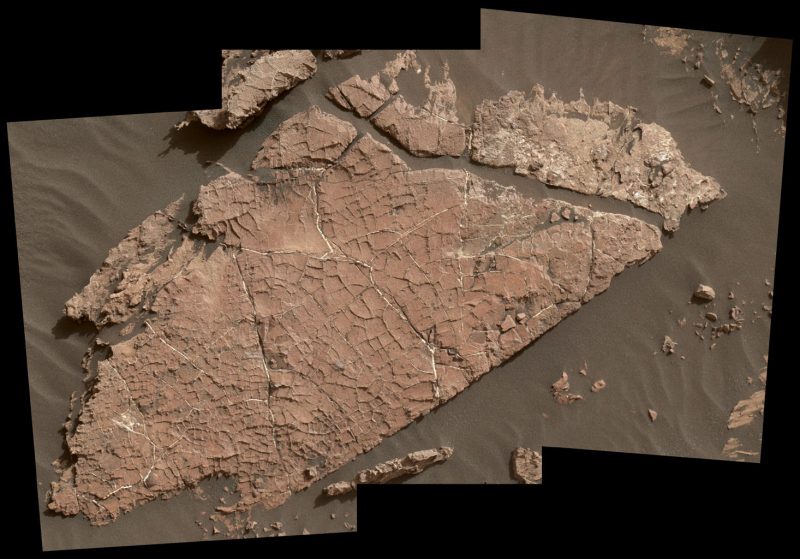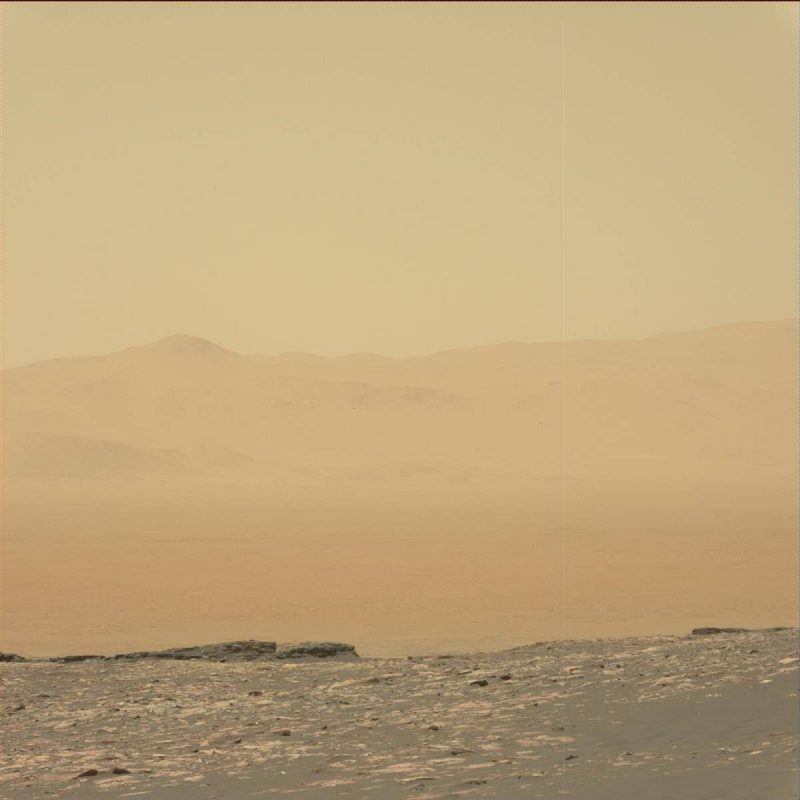
In recent weeks, NASA has been using its Curiosity rover – now on lower Mount Sharp, Mars – to examine slabs of rock cross-hatched with shallow ridges. They look for all the world like cracks in drying mud, and that’s exactly what scientists believe they are. It’s important because you need water to make mud, and water is key to life as we know it. Finding features like these rocks, then, is part of Curiosity’s mission on Mars; it’s investigating how and when the habitable ancient conditions known from the mission’s earlier findings evolved into the drier and less favorable conditions for life that we see on Mars today. Curiosity science team member Nathan Stein – the Caltech grad student who led this most recent investigation – described a particular site, known as Old Soaker among Mars scientists. He said:
Mud cracks are the most likely scenario here.
If this interpretation holds up, NASA said, these would be Curiosity’s first confirmed mud cracks, technically called desiccation cracks by scientists. Stein remarked:
Even from a distance, we could see a pattern of four- and five-sided polygons that don’t look like fractures we’ve seen previously with Curiosity. It looks like what you’d see beside the road where muddy ground has dried and cracked.
Stein and his fellow scientists believe that this cracked layer formed more than 3 billion years ago and was subsequently buried by other layers of sediment, all becoming stratified rock. Later, wind erosion stripped away the layers above Old Soaker. Material that had filled the cracks resisted erosion better than the mudstone around it, so the pattern from the cracking now appears as raised ridges.

The team used Curiosity to examine the crack-filling material. NASA said:
Cracks that form at the surface, such as in drying mud, generally fill with windblown dust or sand. A different type of cracking with plentiful examples found by Curiosity occurs after sediments have hardened into rock. Pressure from accumulation of overlying sediments can cause underground fractures in the rock. These fractures generally have been filled by minerals delivered by groundwater circulating through the cracks, such as bright veins of calcium sulfate.
Both types of crack-filling material were found at Old Soaker. This may indicate multiple generations of fracturing: mud cracks first, with sediment accumulating in them, then a later episode of underground fracturing and vein forming.
Curiosity Project Scientist Ashwin Vasavada of NASA’s Jet Propulsion Laboratory in Pasadena, California added:
If these are indeed mud cracks, they fit well with the context of what we’re seeing in the section of Mount Sharp Curiosity has been climbing for many months. The ancient lakes varied in depth and extent over time, and sometimes disappeared. We’re seeing more evidence of dry intervals between what had been mostly a record of long-lived lakes.
Curiosity has departed the Old Soaker site. It’s heading uphill toward a future rock-drilling location.

Bottom line:
Enjoying EarthSky? Sign up for our free daily newsletter today!











